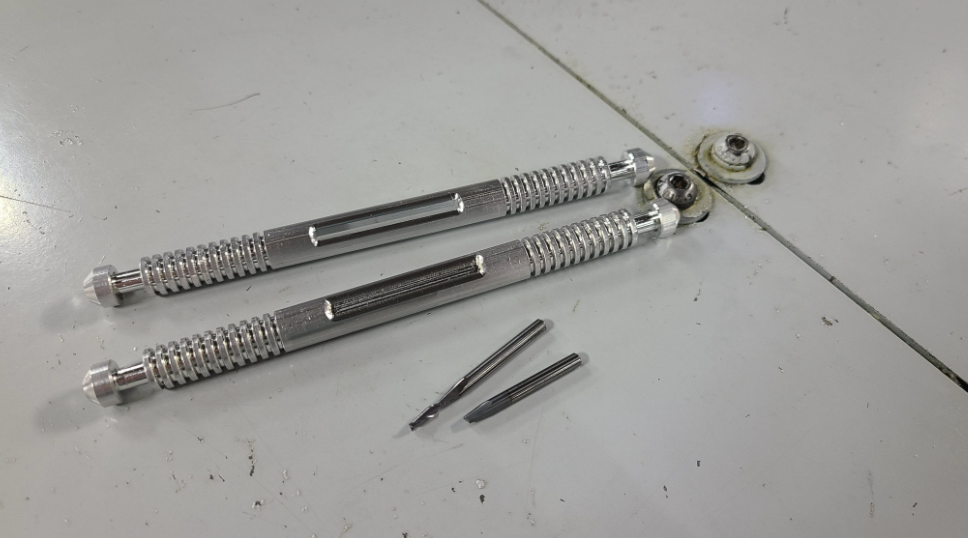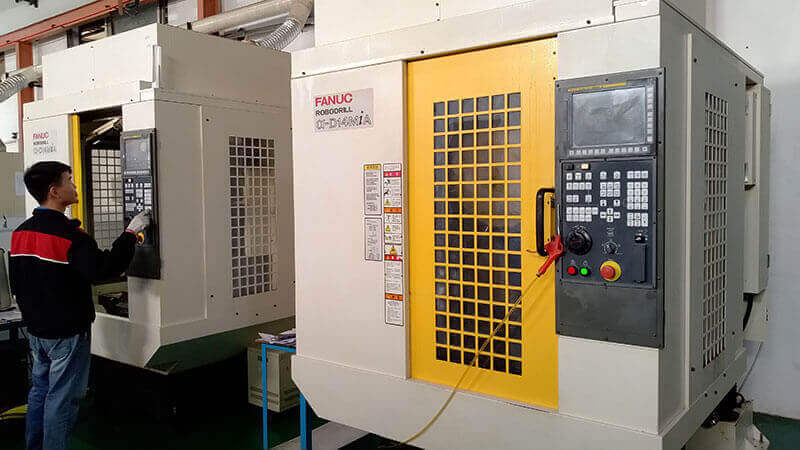Tool life is a critical component of CNC machines. When managed well, it can result in greater productivity, higher quality, less scrap, and significantly less downtime.
Monitoring tool life manually is problematic; it requires an operator to complete an inspection and capture data. Most modern equipment uses software in a tool life management system to measure and control the micro and macro variables required for long tool life.
Tool Life Monitoring: The Basics
Tool life monitoring uses machine data to assess the health of a tool and gauge its lifespan. Data is collected from sensors that monitor the tool group when a machine changes to the next tool. This data is sent to a software program or cloud-based machine data platform, where it’s analyzed to predict the condition and lifespan of a tool.
These programs also consider the type of cutting, jobs, and job lengths that impact tool life. This provides operators with the information they need to get the most life from a tool before discarding or sharpening is required.
There are several methods of tool monitoring. Basic tool monitoring centers around traditional preventive maintenance strategies, in which tools are replaced according to established guidelines or OEM recommendations. This process is heavily reliant upon manual measurement and visual observations.
The second method uses waveforms generated by the amplitude of power signals as the machine and tools perform their tasks. By reading these variables, operators can tell when a tool is close to the end of its life. The method isn’t predictive or effective in the prevention of downtime.
The most accurate measure of tool life occurs when it’s part of a machine data platform like MachineMetrics, which uses high-frequency machine data to measure tool life precisely. This use of real-time data and advanced analytics extends tool life while reducing downtime and scrap.
To put it in plain terms the difference the second and third methods mentioned here is analogous to standard versus high definition television.
Monitor Tool Life on Your Fanuc
Why Monitor Tooling on a FANUC?
Tools used in CNC machining are costly. The harder the material and more complex the jobs, the more costly the tools are. Tool life monitoring is essential because it allows companies to maximize their tools' ROI.
Automated machine tool monitoring offers many benefits that impact efficiency and cost. These include:
- Tool Planning: Automated machine tool monitoring helps companies understand the types of tools they should invest in based on material characteristics, speed, temperature, and other variables.
- Greater Quality: Automated machine tool monitoring results in higher quality than traditional methods. Beyond the prevention of tool breakage, an automated system can detect tool wear. An alarm or warning on an HMI is sent to an operator to intervene before it’s too late.
 A picture of a broken endmill and the resulting scrapped part.
A picture of a broken endmill and the resulting scrapped part.
- Power Monitoring: The exertion of force during a job causes wide-ranging differentials in the power signature of a machine. Automated machine tool monitoring provides analytical insights that can be used to manage wear on tools and machines.
- Better Decision-Making: Armed with real-time data, managers and operators can solve problems quickly. When part of a comprehensive machine data platform, machine tool monitoring can be used to analyze tool performance and lifespan down to the shift, machine, job, and operator level.
Maximize tool life and eliminate scrap
Tool Life Monitoring in FANUC
Tool life monitoring in FANUC is straightforward. Here are the basic steps:
- Specify the tool number to be used.
- Include any offset numbers.
- Set the value for any parameters. These values include geometry offsets and wear offsets.
- As tool life ends, the machine can be programmed to select the same tool from another tool group automatically. The automatic selection of a replacement tool may be based on the calculated life of the tool. This selection requires software that analyzes and executes data, such as an assigned tool life value, tool numbers, tool group numbers, g-code, and t-code.
- To set the tool management function, select the group number, specify the tool compensation, and enter the t-code.
- When setting parameters, the system will accept up to 128 groups. You can then set up the maximum number of groups for tool life management.
- Once set, all variables for tool group, tool number, tool life values, etc., can be accessed using function codes on an HMI.

Image Source: UpMold
Pros and Cons of FANUC's Native Solution
FANUC has focused on producing parts, components, software, and systems specifically for the CNC industry. Because of this, its solutions are customized to address problems and issues common to the industry. It provides an ecosystem that helps automate and manage CNC equipment. Nonetheless, there are pros and cons of monitoring tool life in FANUC:
Pros
- Flexible programming and options in setting parameters
- Allows multiple tool groups for managing tool life
- Will send an alarm if the tool group or tool malfunctions
- Can be embedded in CNC OEM equipment or retrofitted to existing legacy machines
Cons
- Manages only tools used within a program. It doesn’t manage the frequency of use within the program, so additional FANUC or third-party tool wear and tool management software is needed.
- Limited ability to count tools used repeatedly. If a tool is used multiple times in a program, the counter will reset each time.
- Requires additional training. Tool data is set within the job program, and operators must learn the tool programming codes.
- Uses offset D and H-word codes to set parameters rather than a simple T-word code. Operators must learn the code associations.
High-Frequency Data: Unlocking More Effective Tool Life Monitoring
MachineMetrics Tool Anomaly Detection captures machine data straight from Fanuc controls, providing accurate, real-time data on machine performance and health. This data is collected to monitor the machine tool and develop thresholds for when tool failure is imminent.
Further, this data can be used to develop algorithms to predict and prevent catastrophic machine tool failures. How is this possible?
Our team discovered a way to collect data at 1 kHz directly from the control of CNC machines (without using sensors) that can immediately be used as inputs to time series or machine-learning models to predict machine failures.
We refer to this as the MachineMetrics High-Frequency Data Adapter.
Rather than manually collecting part counts or using a basic solution like Fanuc’s, users can leverage high-frequency machine tool data to establish more effective tool life parameters.
Machine tool analytics can be leveraged to optimize processes around the machine, enabling communication and automation that supports the maximization of tool life. For example, operators can be notified of imminent tool failure to proactively replace the machine tool.
This ensures several major benefits:
- Catastrophic tool failures can be avoided
- Reduction in downtime from tool failures or excessive tool failures
- Tool life maximized to ensure the greatest ROI from your tooling investment
- Higher-quality products with greater first-pass yield
Ready to connect your shop floor?
Case Study: Predictive Tool Monitoring
When BC Machining sought help to address continuing tool breakage and high scrap rates, they engaged MachineMetrics for a solution. BC Machining serves the medical, defense, transportation, and power tool industries where precision is critical.
BC Machining had been experiencing excessive tool breakage in their Swiss CNC machines, creating scrap both at the point of breakage and near-end-of-tool-life when parts can vary out of spec.
Using the MachineMetrics solution of capturing high-frequency data and analyzing it through advanced algorithms, BC was able to identify tool breakages to prevent scrap parts.
The drop in lost parts, sorting, and uncertainty translated into near 100% failure detection and a $72,000 annual savings per machine.
Read the complete case study with BC Machining.


.png?width=1960&height=1300&name=01_comp_Downtime-%26-Quality_laptop%20(1).png)


.gif)









Comments